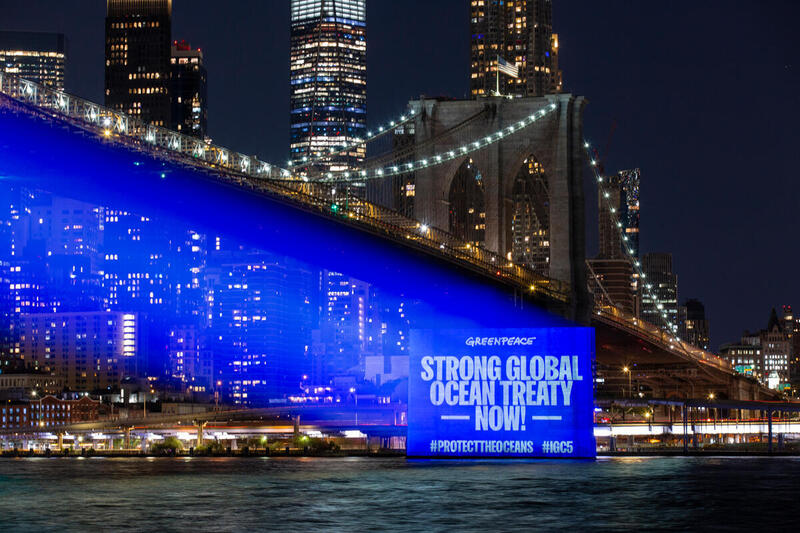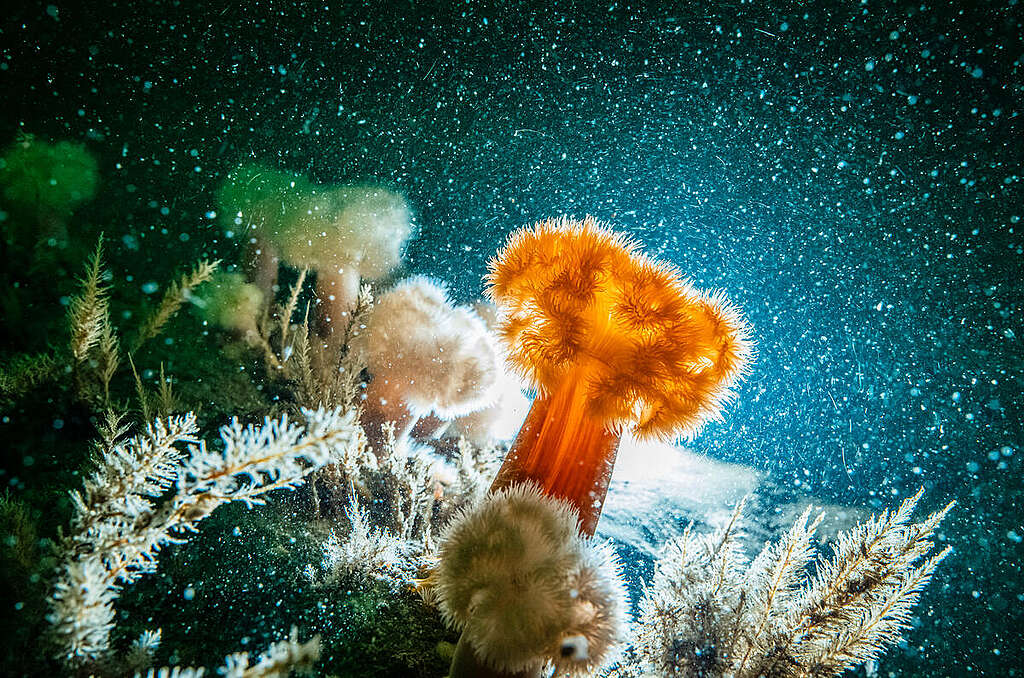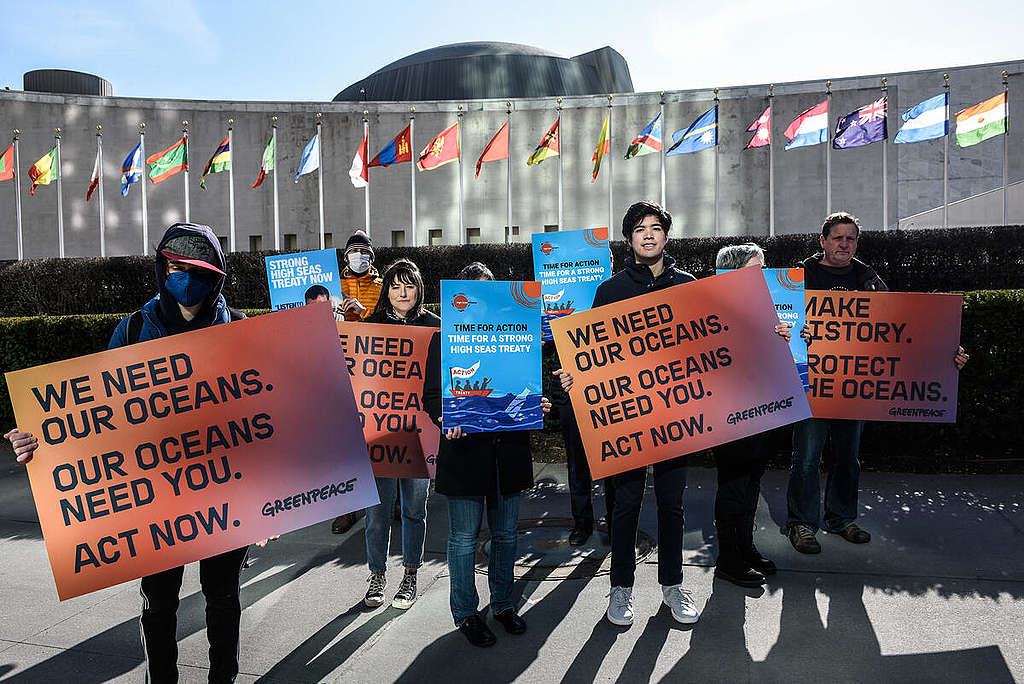Earlier this year, world leaders adopted the first ever Global Ocean Treaty, heeding the calls of 5.5 million people from across the world who joined together to demand action to protect our oceans. After decades of imagining what a network of ocean sanctuaries could look like – magical underwater forests and colourful reefs teeming with life – this historic conservation victory has brought us another step closer to making this vision a reality.
 Greenpeace USA activists project scenes of beauty and fragility onto New York’s iconic Brooklyn Bridge. © POW / Greenpeace
Greenpeace USA activists project scenes of beauty and fragility onto New York’s iconic Brooklyn Bridge. © POW / GreenpeaceBut the Treaty’s adoption does not mean that the work is done. This powerful tool, which can be used to create vast ocean sanctuaries where marine life can recover and thrive, will only enter into force once at least 60 governments have signed it into law. The oceans are vital to every living being on Earth, and the threats they face are increasing every day. Every moment counts.
Using the Treaty as a compass, Greenpeace International has released a major new report, titled 30×30: From Global Ocean Treaty to Protection at Sea. The report maps out a clear political pathway to protecting 30% of our oceans by 2030, starting with identifying three key priority sites to be among the first set of ocean sanctuaries, due to their ecological significance: the Sargasso Sea in the Atlantic ocean, the Emperor Seamounts in the Northwest Pacific Ocean and the South Tasman Sea/Lord Howe Rise between Australia and New Zealand. Each case study details a pathway to protection using the new Treaty.
 Research divers from the company Submaris examine the seabed off Borkum. © Uli Kunz / Submaris / Greenpeace
Research divers from the company Submaris examine the seabed off Borkum. © Uli Kunz / Submaris / GreenpeaceThe report also stresses that human pressures on our oceans continue to grow: a detailed new analysis of fishing activity on the high seas indicates thatapparent fishing hours have risen by almost 10% since 2018. What’s even more alarming is that the report found fishing activity on areas earmarked for protection under the Treaty has grown even quicker. Our oceans are running out of time. But the momentum is on our side and it’s crucial that we use every bit of it to make governments act swiftly to give our oceans a chance to bounce back.
On 20 September, the Treaty will open for signatures at the UN General Assembly. By adding their names, world leaders will show their support for protecting the world’s oceans – however until they make the Treaty into law, these signatures are just words on paper. We need as many people as possible to join with us and show politicians that they must act urgently to protect our oceans.
 Governments are meeting for the IGC4 (4th Session of the Intergovernmental Conference) at the United Nations to negotiate towards a Global Ocean Treaty for international waters, which cover almost half of the planet (43%). © Stephanie Keith / Greenpeace
Governments are meeting for the IGC4 (4th Session of the Intergovernmental Conference) at the United Nations to negotiate towards a Global Ocean Treaty for international waters, which cover almost half of the planet (43%). © Stephanie Keith / GreenpeaceTo accompany the release of this report, Greenpeace International has partnered with UK animation studio Rumpus to create a breathtaking short animated film that brings the story of ocean protection to life. Featuring the iconic voices of actor and activist Jane Fonda, actor Simon Pegg and singer-songwriter Camila Cabello, this short film tells the story of three ocean friends who come face to face with the realities of ocean destruction.
Please sign the petition and share the animation to spread the word.
Jeanette Meyer is a Global Digital Campaigner with Greenpeace campaign Protect the Oceans.

 1 year ago
50
1 year ago
50


